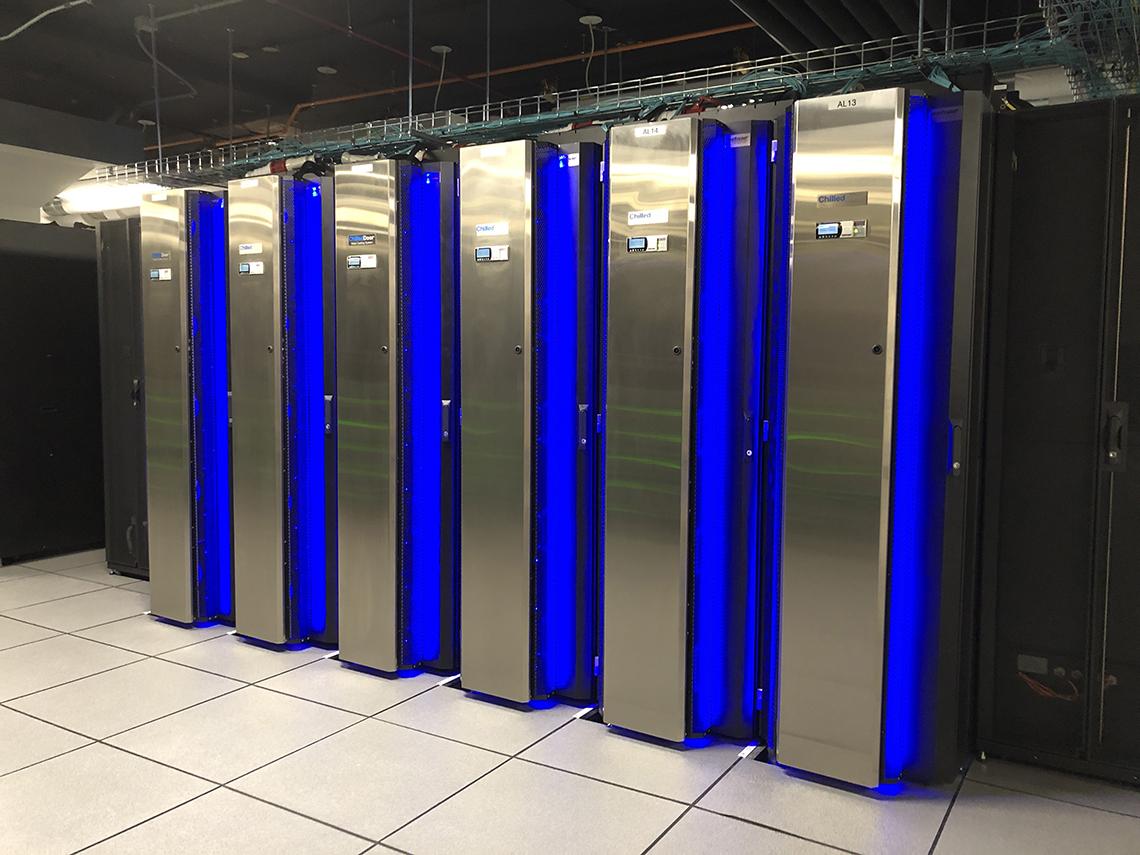Biowulf: NIH’s Top-Ranking Supercomputer

Photo: Ben Chambers
Before entering the NIH Data Center in Bldg. 12, each visitor is given a pair of earplugs to drown out the whir of Biowulf, NIH’s state-of-the-art supercomputer, and its enormous cooling system. The supercomputer enables scientists in the NIH Intramural Research Program (IRP) to analyze massive datasets and attempt projects whose sheer scale would make them otherwise impossible.
Biowulf is a massive upgrade from NIH’s first supercomputer, the Cray X-MP/22, which NIH researchers used from 1986 to 1992. The Cray was used to study molecular structures and conduct image processing, statistical analysis and basic DNA sequencing. Biowulf came online in 1999 as a response to the exponential increase in the size of scientific datasets in fields such as biochemistry, microbiology and genomics that occurred in the 1990s. Datasets have grown even more since then.
To meet the demands of modern biomedical research, NIH embarked on a 5-year initiative in 2014 to enhance Biowulf’s already considerable computing power. Four years into the endeavor, the supercomputing system has become a world-class resource that is currently used by more than a third of all IRP research labs at NIH.
“We’re extremely encouraged by the number of researchers who want to use Biowulf,” said Dr. Andy Baxevanis, director of computational biology for the IRP. “High-performance computing is a critical element of modern-day biomedical research and Biowulf is uniquely positioned to help members of the IRP tackle crucial research questions that were previously beyond our reach.”
The system is comprised of 99,000 computational cores. Each core can independently run program code, allowing researchers to process a large number of simultaneous jobs and large-scale memory tasks. Biowulf also provides 25 petabytes of primary storage, which is enough to store the information found on over 5.5 million DVDs.
That computing power has enabled IRP researchers to publish more than 2,100 research papers based on data that was generated or analyzed using Biowulf, with topics ranging from how the time of day affects the brain’s water content to how genes influence sleep duration in fruit flies. Overall, 30 percent of Biowulf’s computing power is used for computational chemistry, 20 percent for genomics, 26 percent for processing and analyzing images and the remainder distributed across dozens of other fields of biomedical inquiry.
Published researchers at NIH aren’t the only people to recognize Biowulf’s noteworthy capabilities. The TOP500 project continues to rank Biowulf in the top 100 of the most powerful supercomputers in the world. Moreover, the HPC team was given the NIH Director’s Award in 2017 in recognition of its work.
“Biowulf enables intramural researchers to make biomedical discoveries,” said Andrea Norris, director of CIT and chief information officer at NIH. “I expect its important computational offerings will continue to be heavily used by IRP researchers.”
The final phase of the expansion effort will add approximately 30,000 additional computational cores to the supercomputer and will come online in July 2019. For more information on Biowulf, visit hpc.nih.gov, contact staff@hpc.nih.gov or attend one of the HPC team’s recurring coffee shop consultations on the NIH campus.—John Hotka
